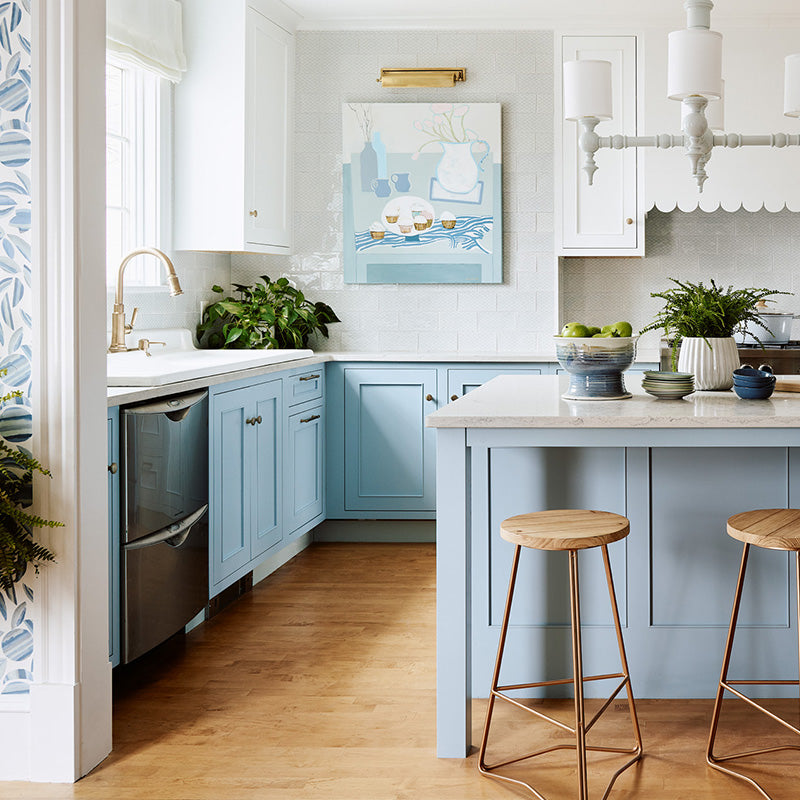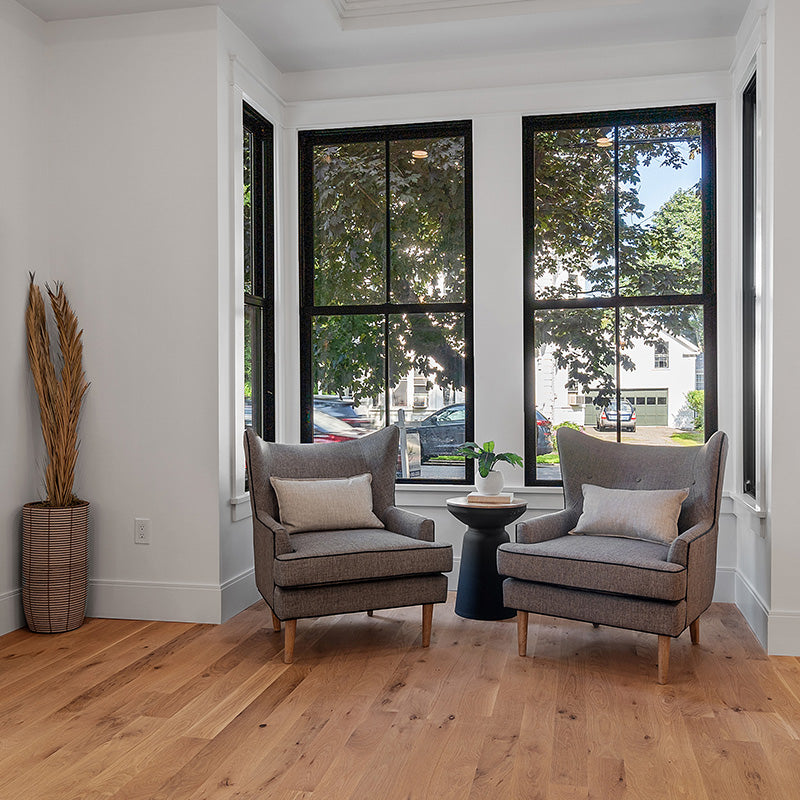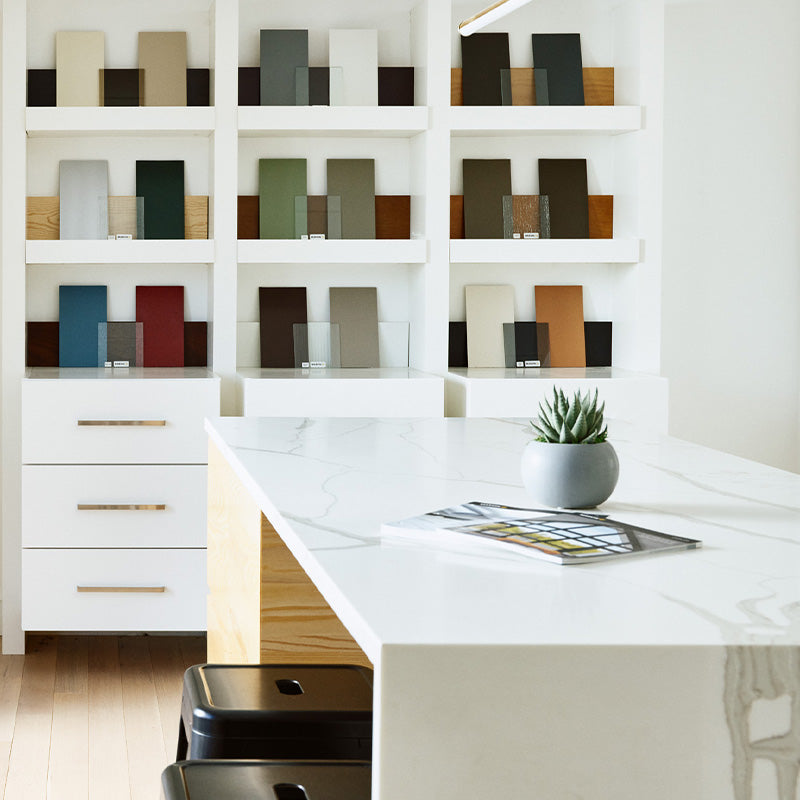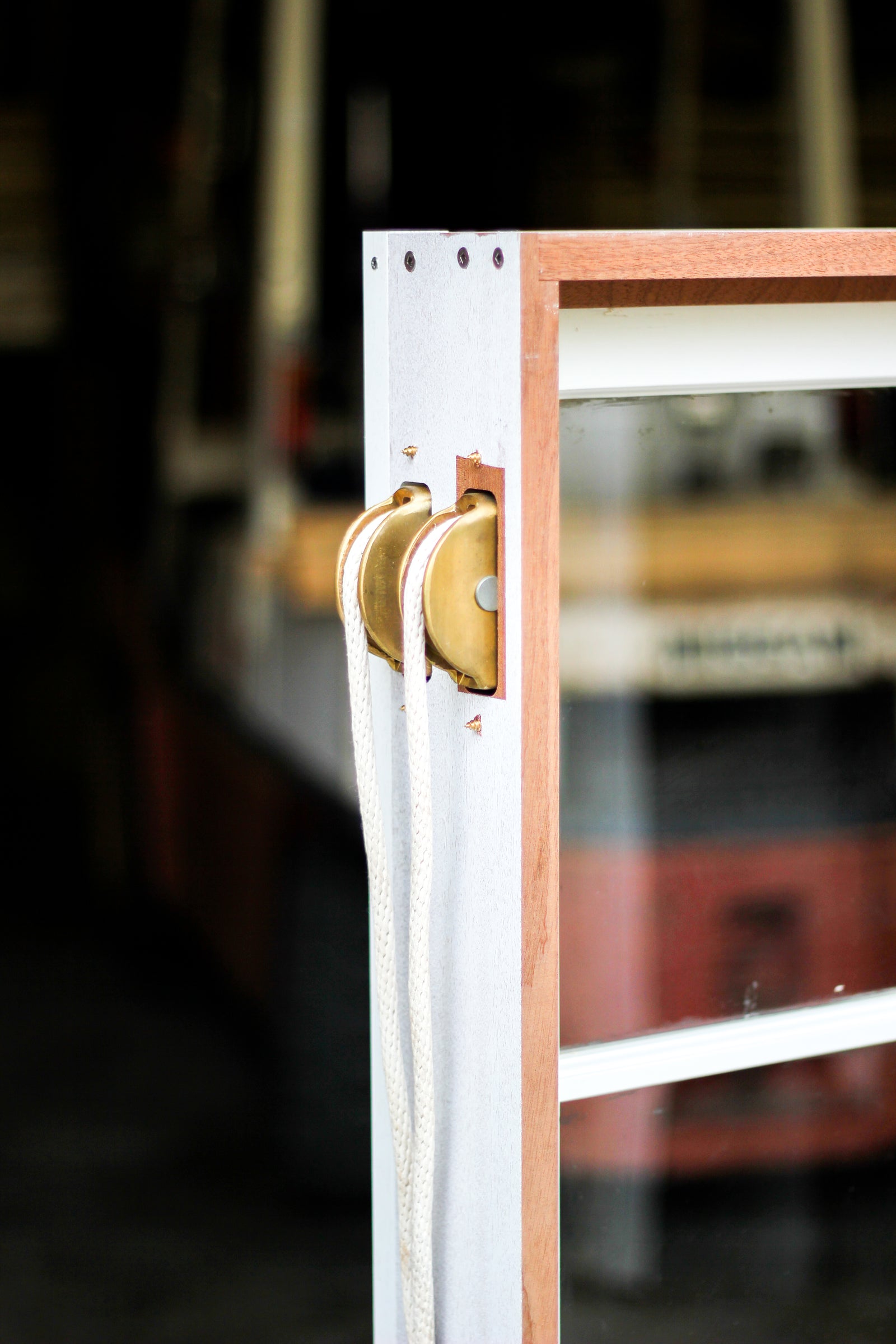Products
Projects
Resources

Winter is Here
December 06, 2018
You can tell because the sun sets at 4:00 and the morning dew on your windshield has turned to ice. Solstice has come and gone, but the days are yet to feel any longer. If you are surviving the cold snaps by turning up the thermostat and piling on the blankets then maybe it's time to consider an alternative. Addressing the drafty corners that you've been so careful to avoid can help keep you and yours warmer when the of single digit temperatures comes rolling in.
Windows
For windows to be fully sealed, they must be closed and in the locked position. Locking your windows isn’t just to keep people from getting into your home. It helps create a weather tight seal and prevent drafts in your home.
Traditional single pane glass is not a good insulator, but windows have come a long way from what they used to be. One option that can help keep your home warm is a Low Emissivity or Low-E coating on your windows. Low-E coatings are an extremely thin film (thinner than a strand of hair) that reflects radiant energy. This helps the glass in your windows act as a better insulators. If the glass in your windows doesn’t come with this coating, Low-E storm windows may be a good option for you.

Often replacing windows is avoided due to the high cost or a desire to preserve the historic integrity of a building. Weatherization programs often dismiss windows because of the cost, choosing instead to add insulation or high efficiency HVAC equipment. Low-E storm windows offer a low-cost alternative to total window replacement. These storm windows can turn existing windows into air-sealed, insulated, heat reflecting assets. Installing a low-e storm windows can reduce a home’s heating and cooling costs by 10%–35% at a much lower price point than new windows. Low-e storm windows can be used in private residences, small commercial buildings, historic properties, and facilities that house residents, such as nursing homes, dormitories, and in-patient facilities.

Doors
Windows aren’t the only place a home can lose heat. Doors can also leave gaps for cold air to sneak in. Storm doors can add another layer of protection. Check to see that your heating system is working properly, clean the filters and make sure vents are clear. Allowing your furnace to work efficiently means your home will be warmer and your bills lower. Curtains and drapes are a great way to cover drafty windows with style, but you may not want to keep them closed all the time. If you have windows that allow a lot of sun in, leave the curtains open during peak hours so that you can take advantage of the solar heat.
 |
 |
Insulation
Insulation plays a key role in keeping your home warm and cozy. Based on new research, the North American Insulation Manufacturers Association (NAIMA) estimates that roughly 90 percent of existing U.S. homes are under insulated, wasting energy, money and decreasing comfort for homeowners. The study focuses on how increased insulation across the US housing sector can decrease energy use, as well as cut carbon dioxide and other pollutants.

Heat
Regulating the temperature in your home is crucial for cutting costs. Investing in a programmable thermostat can help. Save energy by setting the thermostat to 68°F while you're awake and setting it lower while you're asleep or away from home. By turning your thermostat back 10° to 15° for 8 hours, you can save 5% to 15% a year on your heating bill. One of the most important things about a programmable thermostat is learning how to program it. Getting one but never taking advantage of its function is all too common.

Turning your heat on high when your home and shutting it off when you aren’t is not an effective means to control the temperature of your home. The furnace works overtime to heat your house back up, resulting in little to no savings. However, if you just turn it down when you are gone, the temperature of your home drops and your home will lose heat more slowly. The lower the interior temperature, the slower the heat loss. Your house loses less energy than it would have at a higher temperature. So the longer your house remains at the lower temperature, the more energy you save. The same concept applies to raising your thermostat setting in the summer. A higher interior temperature will slow the flow of heat into your house, saving energy on air conditioning.

Enjoy the winter wonderland without worrying about whether or not your bank account will survive. Cozy up with a good book and a cup of tea. Just because it’s cold outside, doesn’t mean it has to be cold inside.
Subscribe Today!
Our goal is to provide you with as much information as possible. Our newsletter is full of tips, inspiration and featured projects. We promise to only send you interesting things and never share your email with anyone else.




